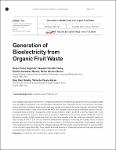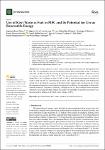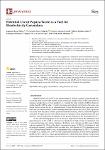Mostrar el registro sencillo del ítem
Generation of bioelectricity from organic fruit waste
| dc.contributor.author | Rojas Flores, Segundo | |
| dc.contributor.author | Nazario Naveda, Renny | |
| dc.contributor.author | Delfín Narciso, Daniel | |
| dc.contributor.author | Gallozzo Cardenas, Moises | |
| dc.contributor.author | Diaz Diaz, Natalia | |
| dc.contributor.author | Valverde Ravelo, Karen | |
| dc.date.accessioned | 2023-10-16T21:53:56Z | |
| dc.date.available | 2023-10-16T21:53:56Z | |
| dc.date.issued | 2021-09-30 | |
| dc.identifier.citation | Rojas, S., Nazario, R., Delfín, D., Gallozzo, M., Diaz, N., & Valverde, K. (2021). Generation of bioelectricity from organic fruit waste. Environmental Research, Engineering and Management, 77, 6-14. https://doi.org/10.5755/j01.erem.77.3.28493 | es_PE |
| dc.identifier.other | . | es_PE |
| dc.identifier.uri | https://hdl.handle.net/11537/34486 | |
| dc.description.abstract | This research proposes an alternative for companies and farmers through the production of electricity using microbial fuel cells (MFCs) using waste from export products. Nine MFCs were manufactured with zinc and copper electrodes; and as substrates, pineapple, potato and tomato pulp wastes were used in the anode chamber, and residual sludge in the cathode chamber. It was observed that the MFCs with pineapple substrate generated higher values of the electrical parameters, resulting in voltage and current values of 0.3484 ± 0.003 V and 27.88 ± 0.23 mA, respectively. It was also observed that the maximum power density was 0.967 ± 0.059 W/cm2 at a current density of 0.04777 A/cm2 for the same substrate. Acid pH values were observed in the three samples, while the conductivity reached its maximum value on day 23 (69.47 ± 0.91 mS/cm) which declined until the last day of monitoring; the turbidity values increased abruptly after day 22 until the last day where a value of 200.3 ± 2.52 UNT was observed for the pineapple substrate. The scanning electron microscopy for the pineapple substrate MFC electrodes shows the formation of a porous biofilm on the zinc and copper electrodes. These results show that a new form of electricity production has been achieved by generating high voltage and current values, using low-cost materials. | es_PE |
| dc.format | application/pdf | es_PE |
| dc.language.iso | spa | es_PE |
| dc.publisher | Kaunas University of Technology | es_PE |
| dc.rights | info:eu-repo/semantics/openAccess | es_PE |
| dc.rights.uri | https://creativecommons.org/licenses/by-nc-sa/3.0/us/ | * |
| dc.source | Universidad Privada del Norte | es_PE |
| dc.source | Repositorio Institucional - UPN | es_PE |
| dc.subject | Residuos orgánicos | es_PE |
| dc.subject | Bioelectricidad | es_PE |
| dc.subject | Pilas de combustible microbianas | es_PE |
| dc.subject | Microbial fuel cells | es_PE |
| dc.subject | Boelectricity | es_PE |
| dc.subject | Organic waste | es_PE |
| dc.subject | Current | es_PE |
| dc.title | Generation of bioelectricity from organic fruit waste | es_PE |
| dc.type | info:eu-repo/semantics/article | es_PE |
| dc.publisher.country | PE | es_PE |
| dc.identifier.journal | Environmental Research, Engineering and Management | es_PE |
| dc.description.peer-review | Artículo científico | es_PE |
| dc.subject.ocde | https://purl.org/pe-repo/ocde/ford#2.07.00 | es_PE |
| dc.description.sede | Trujillo El Molino | es_PE |
| dc.identifier.doi | https://doi.org/10.5755/j01.erem.77.3.28493 |







